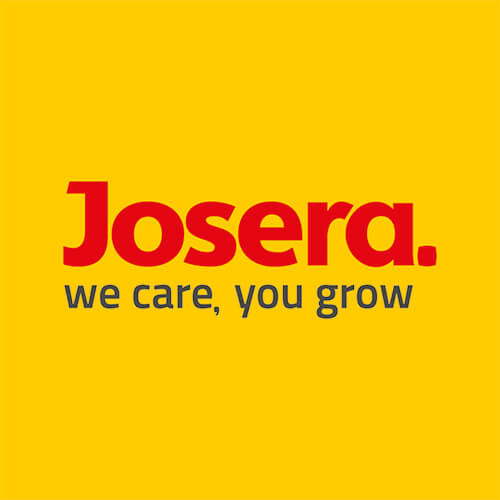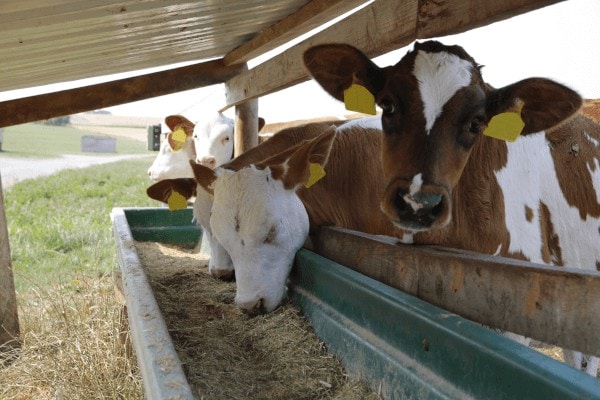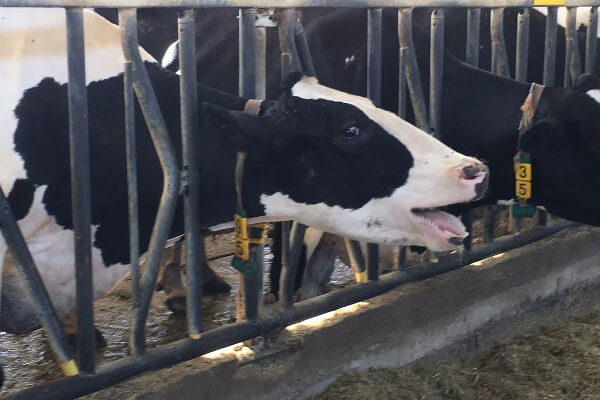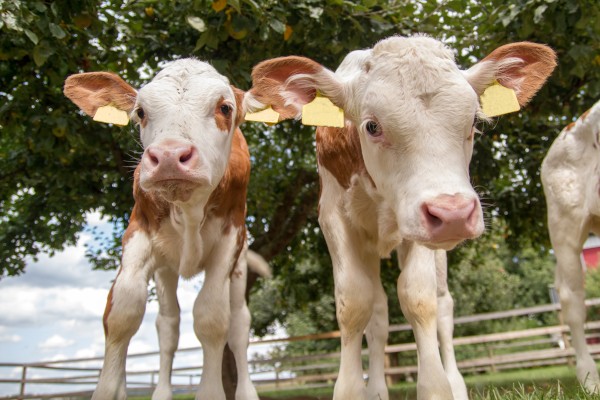The summer heat is not just a problem for the cows
While the thermometer continues to rise above the 25°C mark around midday, many measures are already being taken to combat heat stress in the dairy barn -additional drinking troughs, sprinkler systems, and fans. But despite all the efforts being made by our trusted milk suppliers: the calves are also not safe from heat stress and should not be forgotten!
Calves are at least as vulnerable!
The heat on the farm is no less difficult to endure for the youngest than for the adult cows. The temperature at which they feel comfortable is a bit higher, but, ultimately, it is clearly too hot for them at 25 degrees. Compared to cows, calves dehydrate much faster. The symptoms in this case are similar to those of adult cows: The calves only start to sweat (to cool themselves through evaporation) and pant with their mouths open so that they can release more heat through the exhaled air. If the breathing rate rises significantly above the normal 16-50 breaths per minute, the calves are clearly too warm. At first, they lie down less often so as to enlarge the “cooling surface”, and it’s only when dehydration is already evident that the muscles start to tremble and they have to lie down again due to exhaustion. The body temperature can then rise up to 40°C. In the worst case, excessive heat stress can lead to the calf’s death.
Even if heat stress has not yet resulted in these serious and obvious reactions, the calves are already suffering: they use almost twice as much water as normal and considerably more energy. Nevertheless, they also lose their appetite, so they tend to take in less liquid, milk replacer and feed, which increases exhaustion. Persistent exhaustion in turn weakens the immune system and paves the way for other problems such as diarrhoea, but also fly maggot infestation, navel infections and other unsightly complications. In order to prevent this downward spiral, measures must be taken early to protect the calves from heat stress.
As a farmer, what can I do to help my calves?
Fortunately, there are a number of simple measures that can be taken to make summer much more pleasant for calves and to prevent serious consequences.
?First, the most important thing: water, water, water. Water requirements of calves as well as cows increase significantly at these temperatures, while at the same time less is absorbed by the milk exchanger. Plenty of water of good quality MUST be available at all times!
Further measures concern the stabling: That which provides sufficient warmth in winter is now doing a disservice to the calves: Draft-proof igloos, straw litter, wind-protected corners with lots of sun contribute even more to overheating the calf’s stalls.
?Shade: First of all, it is recommended that igloos be moved to shady corners or covered, for example with a large awning or a foil.
?Air: Calf igloos heat up very quickly. In order to improve the air circulation, all available openings should be opened and the igloo should be “jacked up”, for example on bricks, to allow fresh air to be supplied from below. Greater distances between the individual igloos also improve circulation. If the calves are housed in stables, windows and curtains should be opened and additional fans are recommended -however, if possible, do not expose the calves to a direct draught. Fans can also provide relief outdoors when there is no wind and scorching temperatures.
⛱Insulation: Straw and hay are used for thermal insulation in winter. In summer, however, this is counterproductive – Sand, for example, conducts body heat much better. So if possible, spread sand around, which also prevents fly maggots. Then, for the first few hours, check whether individual calves start to eat the sand.
?Stocking density: Overcrowding further aggravates heat generation and lack of air circulation: Avoid overcrowding if possible and strive for the lowest possible stocking density.
?Other measures concern feeding management. It is advisable to shift the feeding to the early morning and late evening hours when the temperatures are not quite as high. This has the added advantage that fewer flies and pests gather around the drinking buckets exposed to the midday sun.
Additional drinking troughs containing electrolytes are also recommended to compensate for the loss of water through sweat.
First aid in a heat emergency
If, despite all your efforts, you suddenly find a heat-stressed calf, perhaps even lying on its side and breathing shallowly, you must take emergency measures immediately: Call the vet, bring the affected animal to a cool place and water it until the vet arrives! Water it? Yes, exactly. Fill a watering can with cool water (not ice cold water) and keep wetting the calf with water to lower the body temperature. The water should be applied so as to moisten the calf without soaking it, because the greatest effect is derived not from the water itself, but from the subsequent evaporative cooling. Also, make sure that fresh, cool, and clean water is provided for drinking.
What does JOSERA recommend?
JOSERA VitalTrunk is a versatile special product for supplementing whole milk, as an electrolyte drink and for use as a calving drink after calving.
In addition to vitamins and trace elements, JOSERA VitalTrunk contains important electrolytes, so that the electrolyte loss of sodium, potassium and chloride is balanced. In addition, the glucose contained in the drink provides the calf with quickly available energy.
Do you have any further questions about heat stress or are you looking for a JOSERA wholesaler near you? Simply email us using the Contact form. We will be happy to assist you.
You might be interested in the following contents:
Heatstress in cattle
In summer we humans often work up a sweat. But how do our animals actually cope with this?
Read more about heat stress in cattle in this article.
Live yeast in calf feeding – does it makes sense?
Today live yeast is used in many mineral and supplementary feeds for cows and cattle.
But is the supplementation of live yeast also advisable for calves?






 (No reviews available)
(No reviews available)
